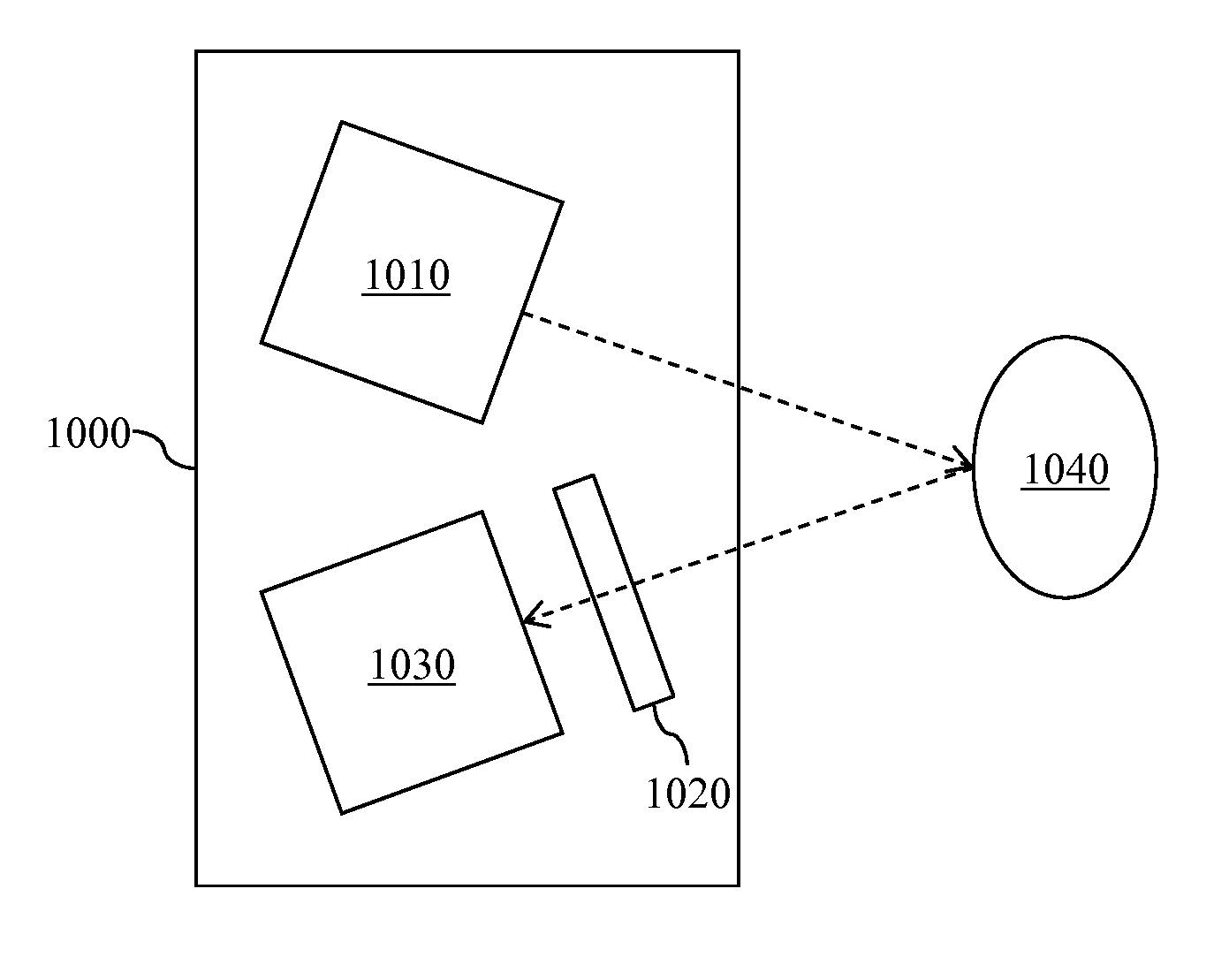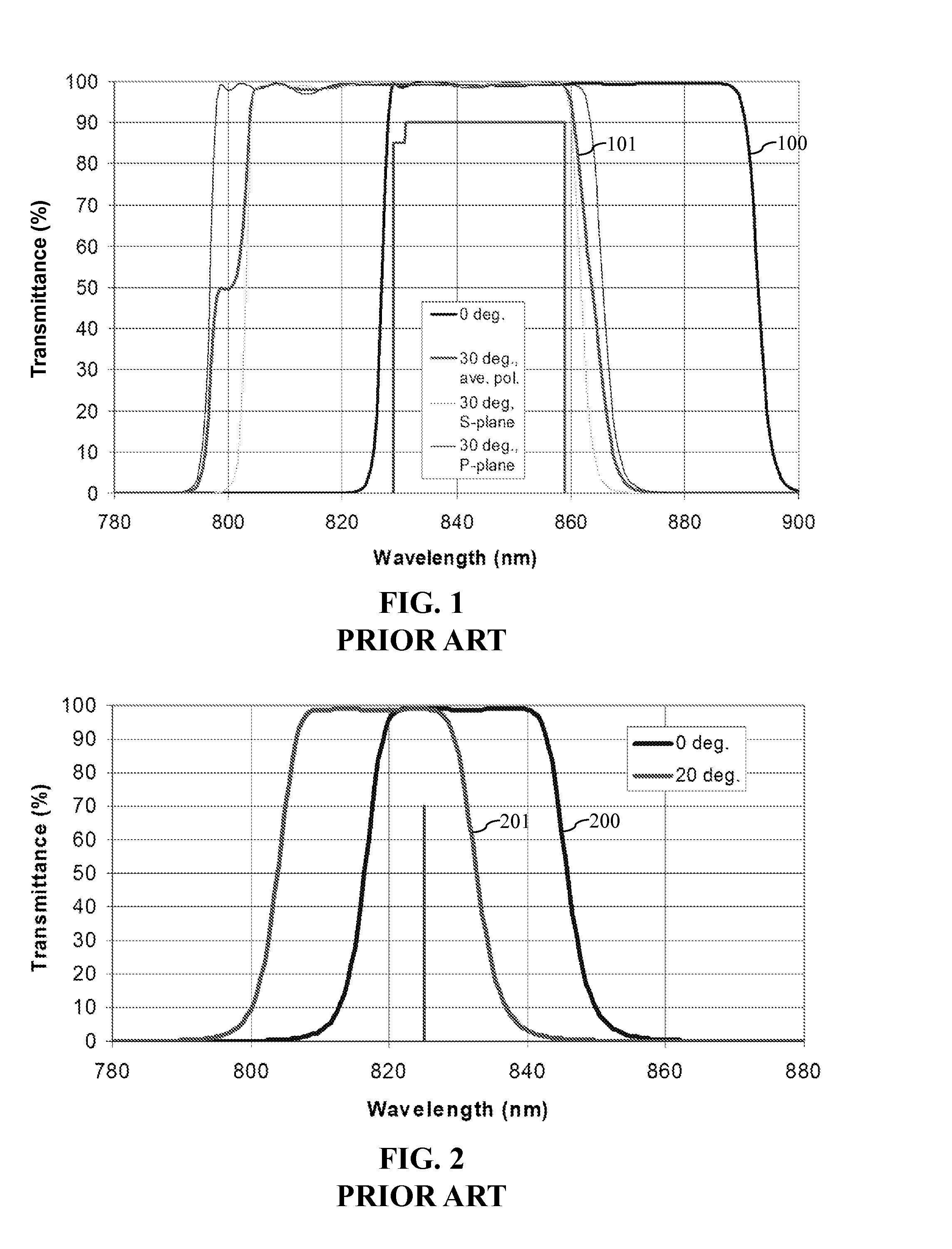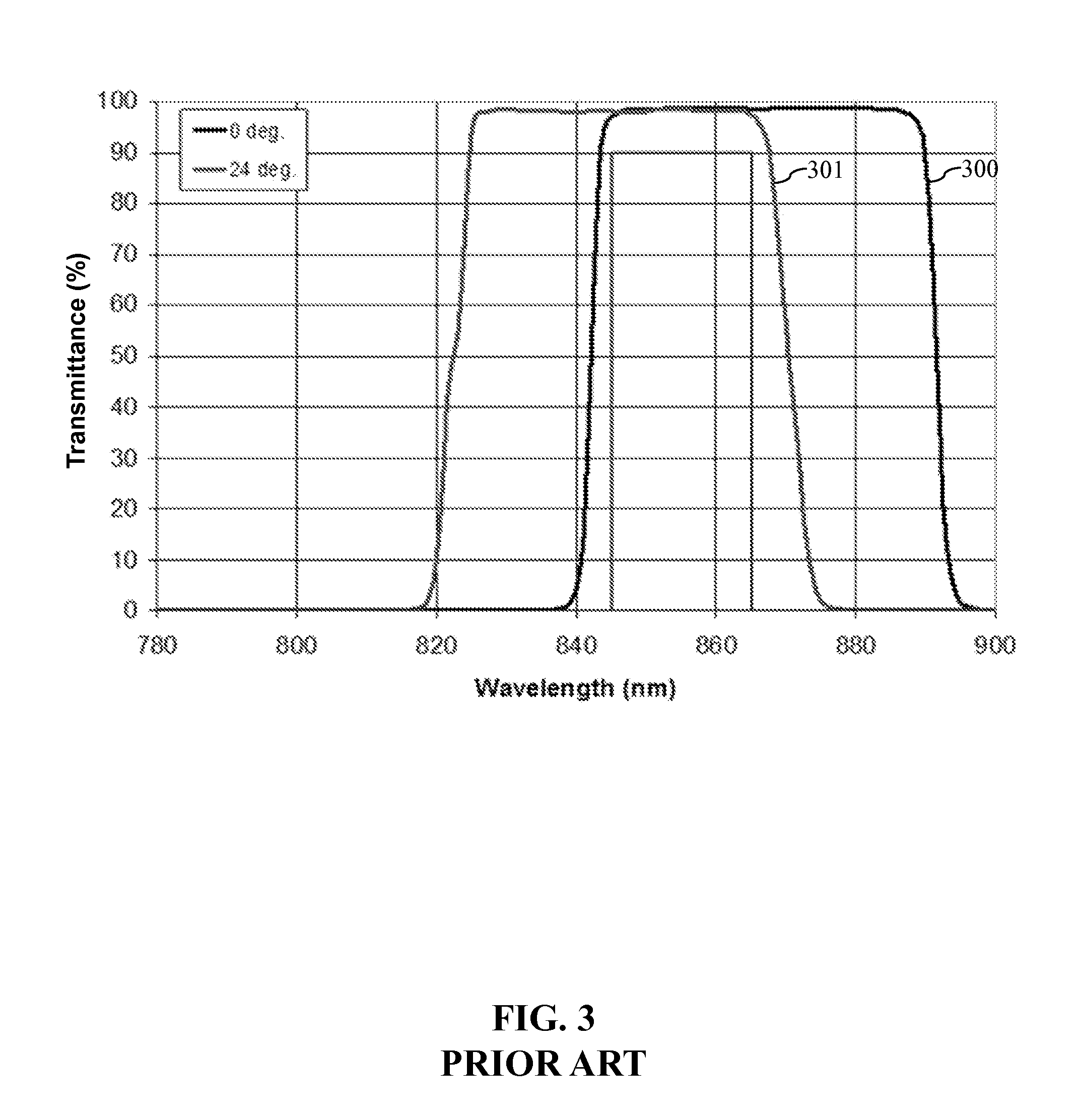Optical filter and sensor system
a technology of optical filters and sensors, applied in the field of optical filters and sensor systems, can solve the problems of increasing the cost and coating time involved in fabricating these conventional optical filters, difficult patterning of conventional optical filters, and low suitability of hydrogenated silicon materials
- Summary
- Abstract
- Description
- Claims
- Application Information
AI Technical Summary
Benefits of technology
Problems solved by technology
Method used
Image
Examples
Embodiment Construction
[0034]The present invention provides an optical filter including hydrogenated silicon (Si:H) layers, which is particularly suitable for use in a sensor system, such as a proximity sensor system, a three-dimensional (3D) imaging system, or a gesture-recognition system.
[0035]The optical filter of the present invention uses an improved hydrogenated silicon material, which has both a high refractive index and a low absorption coefficient over a wavelength range of 800 nm to 1100 nm, i.e., in the near-infrared wavelength range. Typically, the hydrogenated silicon material is amorphous. The hydrogenated silicon material is, preferably, produced by pulsed direct current (DC) sputtering. A sputter-deposition system suitable for producing the hydrogenated silicon material is described in U.S. Pat. No. 8,163,144 to Tilsch, et al., issued on Apr. 24, 2012, which is incorporated herein by reference.
[0036]With reference to FIG. 4, a typical sputter-deposition system 400 used to produce the hydro...
PUM
| Property | Measurement | Unit |
|---|---|---|
| wavelength range | aaaaa | aaaaa |
| refractive index | aaaaa | aaaaa |
| refractive index | aaaaa | aaaaa |
Abstract
Description
Claims
Application Information
 Login to View More
Login to View More - R&D
- Intellectual Property
- Life Sciences
- Materials
- Tech Scout
- Unparalleled Data Quality
- Higher Quality Content
- 60% Fewer Hallucinations
Browse by: Latest US Patents, China's latest patents, Technical Efficacy Thesaurus, Application Domain, Technology Topic, Popular Technical Reports.
© 2025 PatSnap. All rights reserved.Legal|Privacy policy|Modern Slavery Act Transparency Statement|Sitemap|About US| Contact US: help@patsnap.com



